Uncover The Heart Of Kashmir’s Beauty With Pulwama In 2025
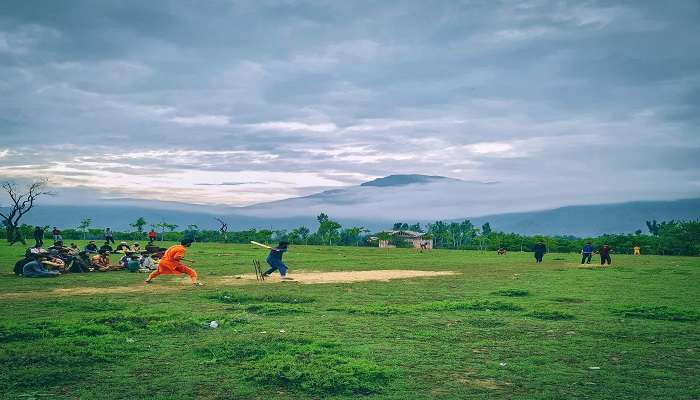
Pulwama is called the heart of Kashmir’s beauty. It is an incredible destination with nature’s beauty and rich cultural heritage. Located in the scenic region of Jammu and Kashmir, Pulwama takes great pride in its lush green fields, beautiful gardens, and serene landscapes. Saffron fields and fragrant orchards are the main characteristics of this area, which has a rich local culture. Be it the scenic beauty, peaceful walks, or the traditional customs of this place, Pulwama gives every tourist an experience to remember and cherish.
Pulwama Tourist Attractions
The beautiful land of Pulwama is filled with a wide range of tourist attractions. You need to plan your trip to the place immediately for a wonderful experience. Here are some of the major places that you must visit:
1. Beautiful Gardens and Saffron Fields
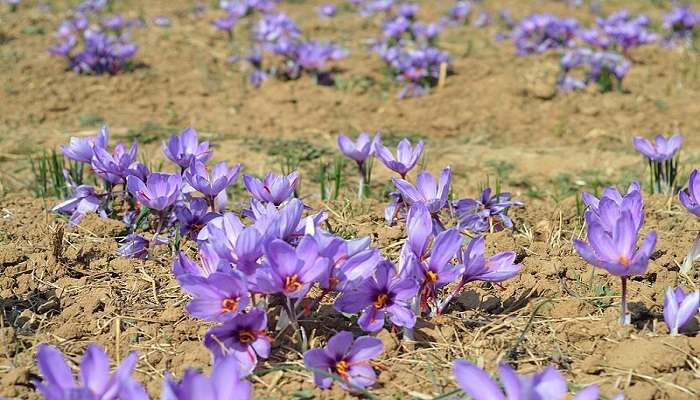
Pulwama features beautiful gardens and vast stretches of saffron fields. Its gardens have bright-coloured blooms and highly maintained landscapes, especially the famous Mughal Gardens, where one can walk leisurely or take pictures. Saffron fields, particularly around Pampore, are one of the strong attractions that allow visitors to view this delicate harvesting of saffron and witness the exclusive beauty of such golden fields.
Tip: The best time to visit, with a great view, is during the saffron flowering period—usually from late October to the beginning of November.
Also Read: Dachigam National Park
2. Lakes With Landscapes And Other Natural Beauty Spots
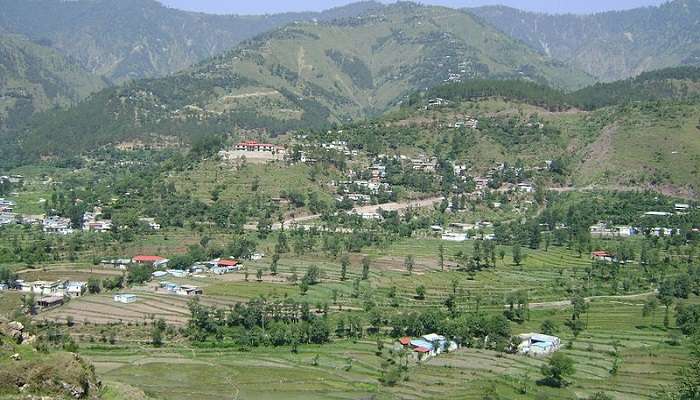
This district is dotted with numerous beautiful lakes and other natural picnic spots. The most outstanding among them is the peaceful Anantnag Lake, surrounded by lush green and providing a calm retreat from worldly noise. The surroundings are very picturesque, giving many opportunities for picnics and relaxation. A few kilometres away lies another beautiful lake known as Wular Lake, which is comparably a vital place one should visit for its natural beauty.
Tip: Do carry a camera to capture the serene beauty of these lakes and enjoy picnics in the lush areas surrounding them.
3. Cultural And Historical Sites
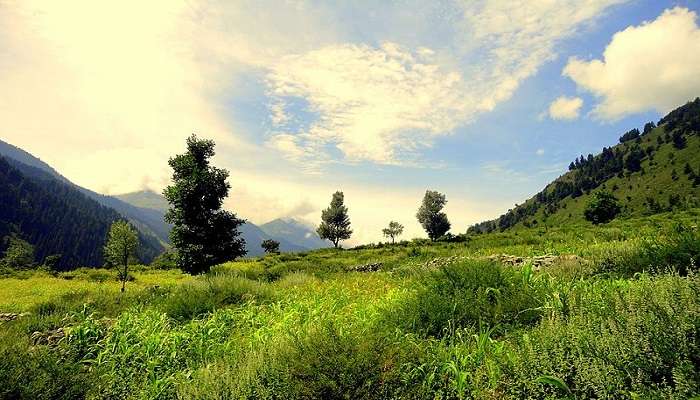
Other places of interest in Pulwama include several cultural and historical sites that reflect its rich heritage. Awantipora Ruins is a historic place, and King Avantivarman built the remains of ancient temples. The town is also dotted with local markets and traditional crafts to give a view of the local culture and artisan skills.
Tip: Explore the local markets and pick up traditional Kashmiri crafts and souvenirs.
Related Post: Akhnoor Fort
Pulwama Cultural Sites
Besides the natural beauty, Pulwama is also home to many cultural spots. Some of the most popular ones to visit are as follows:
1. Ruins of Awantipora
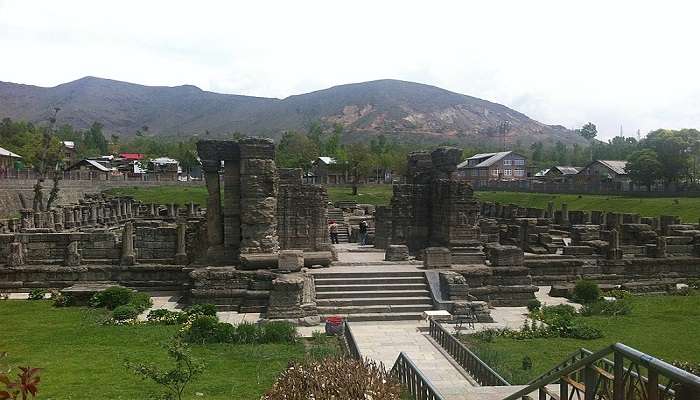
One of the major cultural attractions in Pulwama is the Awantipora Ruins. These ancient ruins, dedicated to Lord Shiva and Lord Vishnu, are the remaining portions of the Hindu temples constructed by King Avantivarman in the 9th century. They involve the ruins of two major temples that portray intricate carvings and the style of architecture of that particular time. A visit to Awantipora will be an interesting view of the region’s historical and religious past.
Tip: Wear comfortable walking shoes and bring a guidebook, or hire a local guide to appreciate the ruins in their full historical context.
2. Local Markets and Crafts
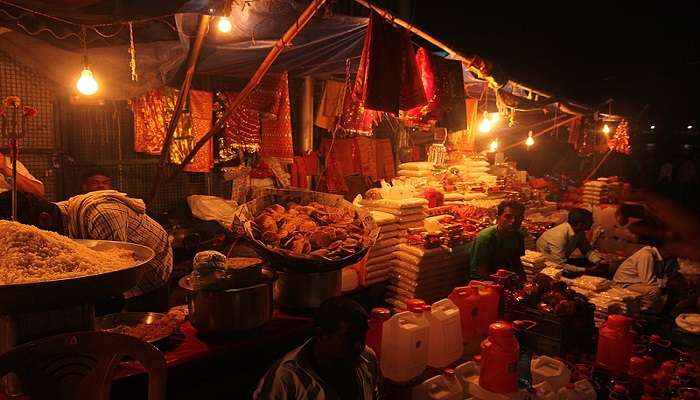
Exotic bazaars form part of the local markets at Pulwama, inside which one finds an experience of the rich cultural heritage of traditional artistry and taste in the locals’ lives. It is well known for beautiful Kashmiri handicrafts that have captured the rich tapestry of Kashmiri culture in hand-woven carpets, Pashmina shawls, and intricately designed papier-mâché items. Exploring these local markets provides an opportunity to pick up some unique souvenirs and lets customers get acquainted with the traditional craft techniques employed by the local artisans.
Tip: Be respectful to the traders whenever you bargain at the local markets. Take time to chat with the artisans and understand their craft.
You May Also Like To Read: Apharwat Peak
Right from the Awantipora Ruins to the Pulwama Fort, there is so much that one can take back from the history emulated across all historical sites located in Pulwama. These landmarks represent the heights of architecture and culture achieved by ancient Kashmir and, in fact, introduce one to the crux of this area’s history. These places are steeped in heritage, and visiting them allows an understanding of Pulwama’s timeless beauty. So, plan your trip to Kashmir for a wonderful experience.
For our editorial codes of conduct and copyright disclaimer, please click here.
Cover Image Source: Facebook
Frequently Asked Questions About Pulwama
What is the best time to visit Pulwama?
April to October are the best months for a trip to Pulwama. The weather remains fine during these months, so one can easily explore the region's horticultural gardens and lakes without being weighed down by temperature conditions.
Are any special permits required to visit Pulwama?
Generally, no special permits are required to visit Pulwama. However, it's always a good idea to check current travel advisories and local regulations, especially if you are to visit sensitive areas.
What does Pulwama have to offer a visitor?
Places of interest in Pulwama include the ancient Kashmiri architecture of Awantipora Ruins and the stunning fields of saffron in Pampore. A few more gardens and natural scenic beauty spots, like Anantnag Lake, are also worth visiting.
How to reach Pulwama?
Connected through Srinagar, located 40 km away, Pulwama is easily accessible. This can be reached by air, road, and rail from most major cities in India, and from there, Pulwama can be reached by taxi or local transport.
What to wear when visiting Pulwama?
Bring along comfortable clothing according to the season. Wear warm layers during the cold season. Remember your camera, good walking shoes, and any documents you need for traveling. If you are going to explore some open-air places, take sun protection, a hat, and water with you.
People Also Read:
Great Lakes Trek in Kashmir Places To Visit In Kashmir Winter In Kashmir

With a passion for exploring and travelling to the roads long forgotten, experience the world through enthralling stories and adventures. Join me as I share my experiences at some of the world’s most popular tourist destinations and quench that pestering curiosity with something exciting!






